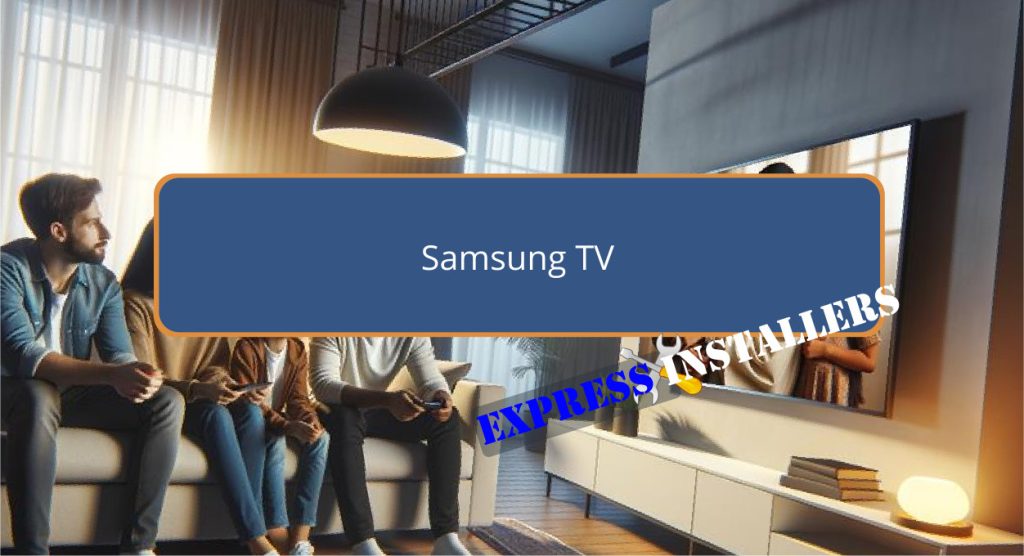
Samsung TVs stand at the forefront of advancing technology, prominently featuring Quantum Dot, 4K, and 8K resolutions that offer striking clarity and vivid colour presentation.
They employ QLED and OLED screens, each engineered to optimise light control and colour precision, with QLED excelling in brightness and OLED in viewing angles and black levels.
Adding to their appeal, Samsung integrates AI technology to upscale images, ensuring even standard definition content is visually enhanced.
Smart connectivity through Bixby, Alexa, or Google Assistant, combined with an array of streaming and app options, caters to a seamless user experience.
The journey into Samsung’s technological innovation offers much more to uncover.
Quick Summary
- Samsung TVs feature advanced display technologies like QLED, OLED, and Quantum HDR for superior picture quality.
- Integrated smart functions include voice control with Bixby, Google Assistant, and Alexa, plus built-in streaming apps.
- Connectivity is facilitated through options like HDMI, USB, Bluetooth, Wi-Fi, and Ethernet.
- They offer energy-efficient designs with features like anti-glare screens and Ambient Mode for enhanced durability and user experience.
- Samsung TVs are cost-effective with competitive pricing, bundled deals, and extended warranty options available.
History of Samsung TVs
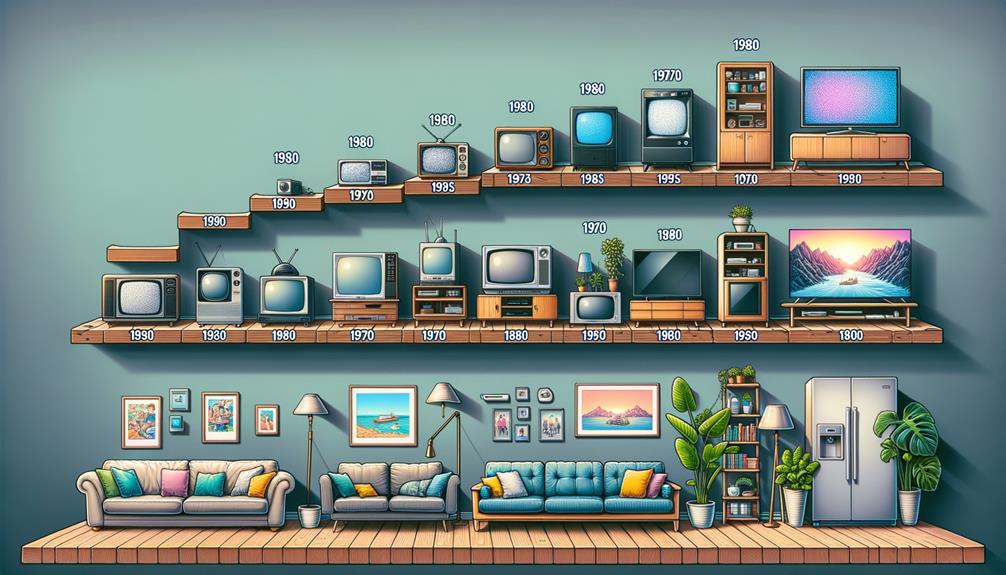
Samsung’s journey in the television market began in the late 1970s, marking a pivotal shift in the global consumer electronics landscape with its innovative approaches to TV technology.
The release of their first model set a new standard for quality and functionality, challenging established players and catalysing a rapid market expansion.
As Samsung entered various international markets, its commitment to adaptability and consumer preference allowed it to quickly ascend in rankings, even in highly competitive regions.
The strategic deployment of cutting-edge technology not only enhanced product appeal but also solidified Samsung’s reputation as a pioneer in the industry.
This competitive advantage was essential in differentiating Samsung from its contemporaries, ensuring a robust foothold in the burgeoning global market.
Latest Samsung TV Models
Building on its historical successes, the latest models of Samsung TVs incorporate advanced features such as quantum dot technology and AI-enhanced image processing, setting new benchmarks in the industry.
These models offer a diverse range of size options, catering to various user preferences, from compact 32-inch screens ideal for smaller spaces, to expansive 85-inch displays designed for immersive viewing experiences.
The emphasis on display durability guarantees longevity and resilience, with screens engineered to withstand various environmental conditions without compromising on visual quality.
Comparative analysis with previous generations shows significant improvements in both the robustness of the displays and the versatility in size offerings, reflecting Samsung’s commitment to innovation and customer satisfaction in their latest releases.
Samsung’s 4K and 8K Technologies
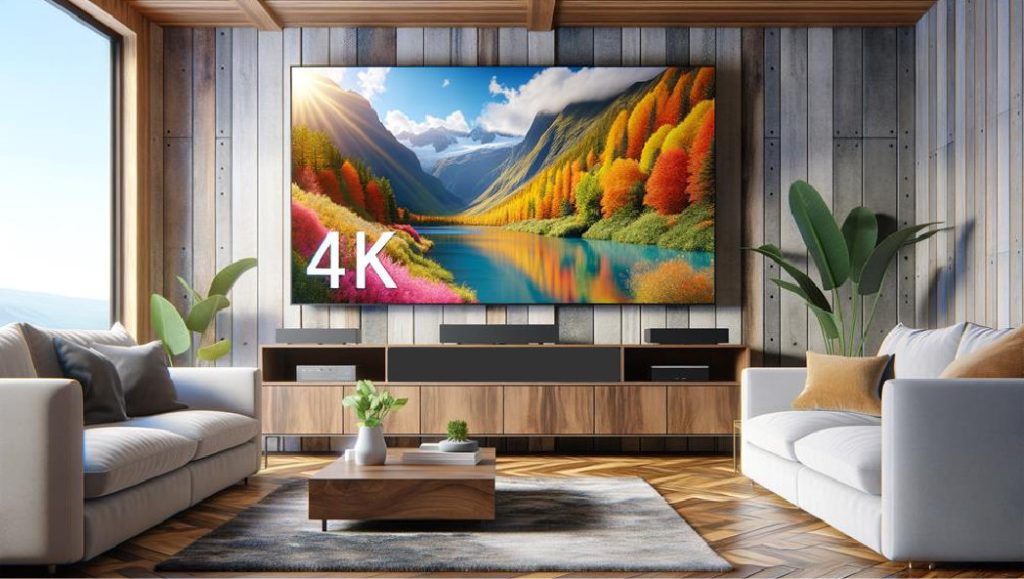
Exploring the domain of ultra-high-definition, Samsung’s 4K and 8K technologies epitomise the pinnacle of current television display capabilities, offering unparalleled clarity and detail.
These technologies not only display native content at high resolutions but also enhance lower resolution media through sophisticated upscaling technology.
Samsung’s upscaling engine analyses and processes each pixel, improving texture and edge definition to present near-4K or 8K quality even from standard HD sources.
Additionally, Samsung’s HDR performance in these higher resolutions guarantees a wider colour spectrum and greater contrast ratios, making the viewing experience much more vivid and immersive.
QLED Versus OLED Technology
While Samsung’s 4K and 8K technologies set high standards in resolution and detail, the discussion between QLED and OLED technology reveals further nuances in display quality and performance.
QLED, or Quantum Dot LED technology, enhances brightness and colour volume, leading to vivid images even in brightly lit environments.
However, OLED, which stands for Organic Light-Emitting Diode, excels in colour accuracy and provides superior black levels due to its ability to completely turn off pixels.
OLED also boasts better viewing angles, maintaining colour consistency and clarity across a wider range of perspectives.
This makes OLED particularly advantageous in larger living spaces where viewers may be spread out.
The choice between QLED and OLED may largely depend on one’s specific viewing preferences and environment.
Smart Features and Connectivity
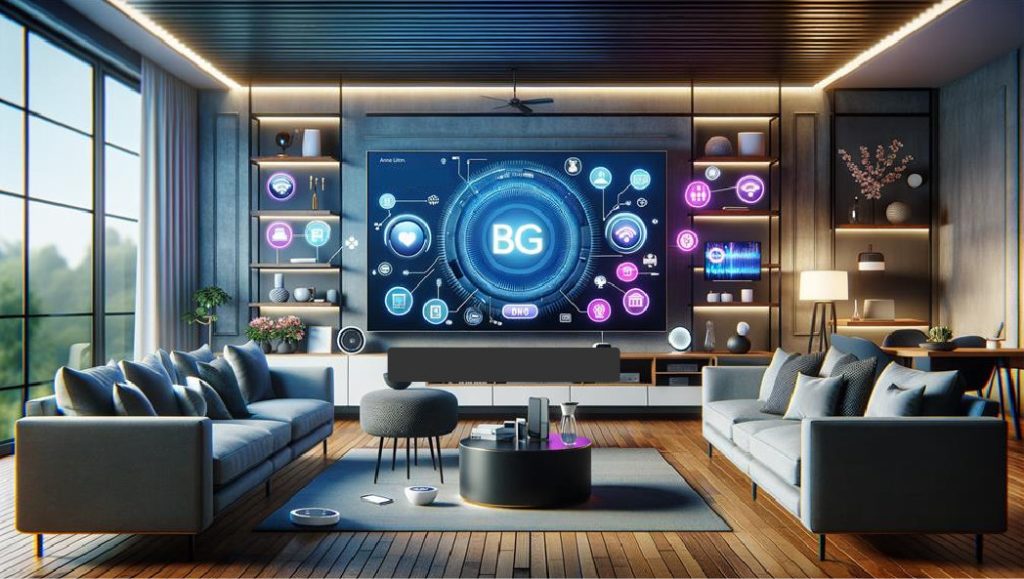
How do Samsung TVs integrate smart features and connectivity options to enhance user experience and functionality?
Samsung TVs are designed with a robust suite of smart capabilities, prominently featuring Voice Control and App Integration.
By leveraging voice assistants like Bixby, Google Assistant, and Alexa, users can control their television and connected home devices with simple voice commands.
This integration facilitates a streamlined, hands-free operation that enhances accessibility and convenience.
Additionally, Samsung’s Smart Hub offers seamless app integration, allowing users to access a wide array of streaming services, social media platforms, and other applications directly from their TV interface.
Comparatively, Samsung excels in creating a user-friendly ecosystem that supports a diverse range of apps, ensuring that users have extensive control and connectivity options at their fingertips.
Gaming on Samsung TVs
Samsung TVs offer advanced gaming features that provide a competitive edge and enhance the gaming experience when compared to other leading brands.
These features include Game Mode and high refresh rates. Through rigorous input lag testing, Samsung TVs consistently show lower latency, important for fast-paced gaming where every millisecond counts.
This performance is enhanced by game mode optimisation, which fine-tunes the display settings to maximise responsiveness and image clarity.
Comparative analysis with competitors reveals that Samsung’s integration of these features not only minimises distractions during intense gaming sessions but also stabilises frame rates, preventing the common issues of screen tearing and stuttering.
This provides a smoother and more immersive gaming experience.
Audio Technology in Samsung TVs
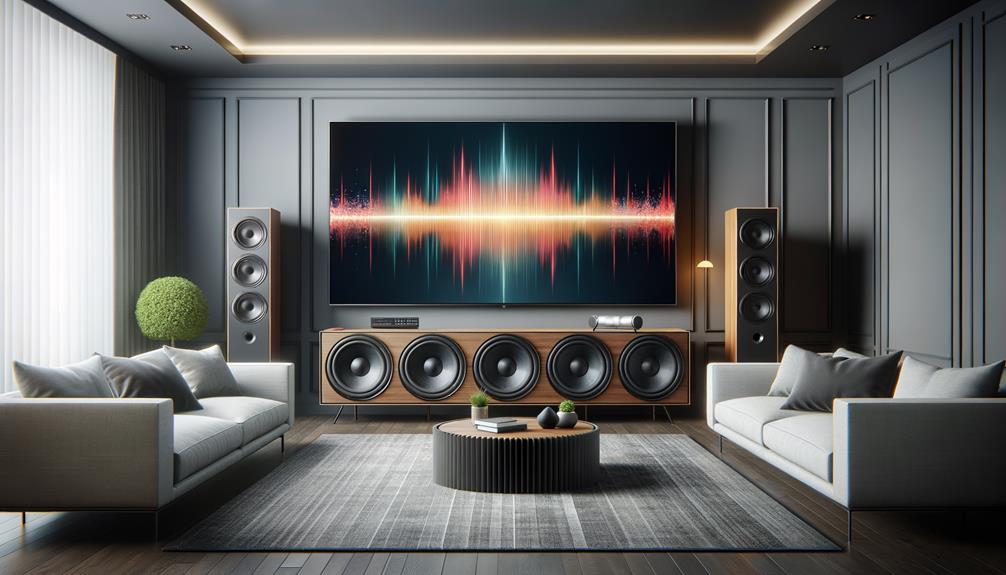
Beyond visual enhancements, the audio technology in Samsung TVs also plays a pivotal role in creating an immersive entertainment experience.
Samsung integrates features like Sound Mirroring and Adaptive Volume to elevate audio quality.
Sound Mirroring allows the TV to sync audio seamlessly with other compatible devices, enhancing the sound landscape without perceptible delays or echoes.
On the other hand, Adaptive Volume automatically adjusts the sound level based on ambient noise conditions and content type, ensuring clarity and consistency in audio output.
Comparatively, while other brands offer similar technologies, Samsung’s implementation is often noted for its precision and the ability to maintain audio fidelity in diverse viewing environments, making it a leader in integrated TV sound technology.
Energy Efficiency and Sustainability
In the field of energy efficiency and sustainability, Samsung TVs are designed with cutting-edge technologies that minimise environmental impact while maximising operational efficiency.
The company has integrated several advanced features that contribute to an eco-friendlier product lifecycle:
- Renewable Resource Integration: Samsung incorporates materials sourced from renewable resources, reducing reliance on non-renewable, polluting substances.
- Energy-Saving Technologies: Advanced LED backlighting and energy-efficient processors guarantee lower power consumption compared to traditional models.
- Recyclable Components: Samsung emphasises the use of eco-friendly materials that are easier to recycle, thereby supporting the circular economy and reducing waste.
These initiatives not only demonstrate Samsung’s commitment to sustainability but also set a benchmark in the industry for combining ecological responsibility with technological innovation.
Purchasing Tips for Samsung TVs
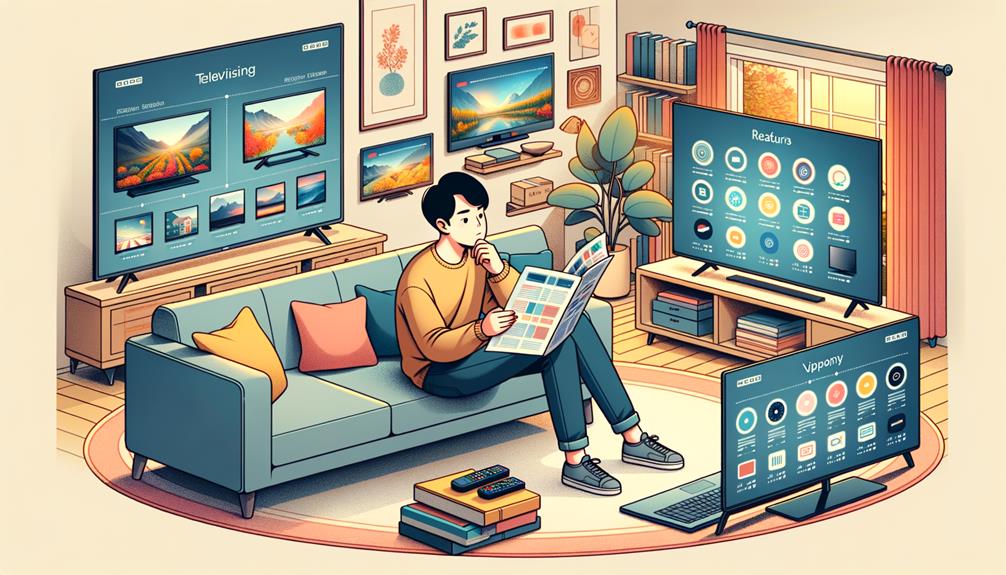
When considering the purchase of a Samsung TV, it is important to evaluate factors such as model specifications, price points, and feature sets in comparison to other brands.
Analysing the display size options offered by Samsung is essential, as it influences viewing quality and fits different room dimensions.
Larger screens cater to expansive spaces, enhancing the immersive experience, while smaller models are suitable for more intimate settings.
Additionally, scrutinising warranty options can safeguard your investment. Samsung typically offers thorough coverage that rivals its competitors, providing peace of mind.
Compare these warranties regarding length and what damages they cover, ensuring you choose a model that balances cost-effectiveness with strong protection and advanced display technology.
Frequently Asked Questions
Can Samsung TVs Be Used as Computer Monitors?
Yes, TVs can serve as computer monitors, provided resolution compatibility aligns and input lag concerns are minimal. Samsung models often meet these criteria, making them suitable for various computing and gaming needs.
How Do I Reset My Samsung TV Password?
To reset your password, start password recovery by going to settings, selecting ‘General,’ then ‘Reset’ to restore factory settings. This process erases all configurations, requiring a comparative analysis with previous settings for best reconfiguration.
Are Samsung TV Stands Universally Compatible?
Samsung TV stands are not universally compatible. Compatibility varies based on the model’s mounting options and stand materials. Consumers must compare these aspects carefully to guarantee a proper fit with their specific television model..
What Is the Typical Lifespan of a Samsung TV?
The typical lifespan of modern televisions depends on durability factors and warranty coverage. For Samsung TVs, this generally ranges between 7 to 10 years, influenced by usage patterns and model-specific build quality.
Can Samsung TVs Connect to Apple Devices?
Modern televisions often feature interoperability with various devices. Samsung TVs, equipped with AirPlay integration and HomeKit compatibility, can effectively connect to Apple devices, allowing seamless streaming and smart home control.
Conclusion
To sum up, Samsung’s evolution in television technology illustrates a trajectory marked by significant innovation, particularly in high-definition formats such as 4K and 8K.
The comparison between QLED and OLED technologies further highlights Samsung’s commitment to enhancing visual experiences.
Advanced smart features, optimised gaming capabilities, superior audio systems, and a focus on energy efficiency showcase Samsung’s adaptive strategies in a competitive market.
Consumers should consider these factors critically when selecting a model that best fits their viewing preferences and technological requirements.
